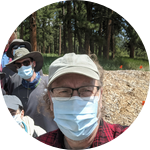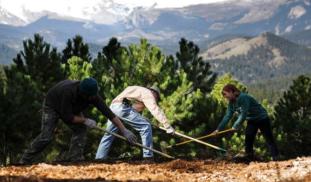16
0
0
Like?
Please wait...
About This Project
Our previous study on the decay of forest waste products found that the compost produced by wild fungi holds up to twice as much carbon as natural montane soils (duff, produced by natural organic decay).
"The carbon sequestration potential of fungally produced composts" will investigate the carbon contents of post decay composts produced by white and brown rot fungus both in situ and in the lab. These techniques could aid in the natural sequestration of carbon in soils.
More Lab Notes From This Project

Browse Other Projects on Experiment
Related Projects
Using eDNA to examine protected California species in streams at Hastings Reserve
Hastings Reserve is home to three streams that provide critical habitat for sensitive native species. Through...
City smart: Are cities making birds smarter?
One cannot go to Florida and miss the White Ibises roaming golf, park and private lawns. But how does a...
How do polar bears stay healthy on the world's worst diet?
Polar bears survive almost entirely on seal fat. Yet unlike humans who eat high-fat diets, polar bears never...

